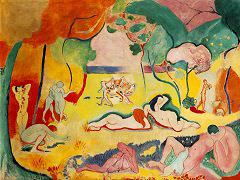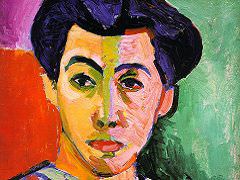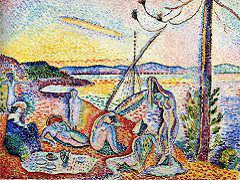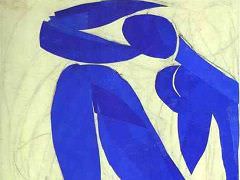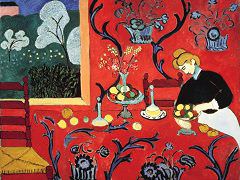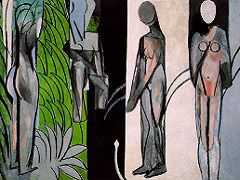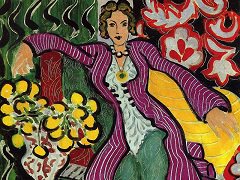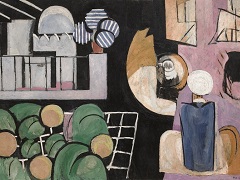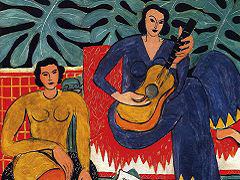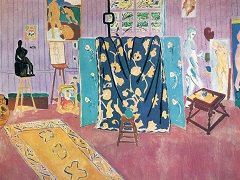Pink Nude, 1935 by Henri Matisse
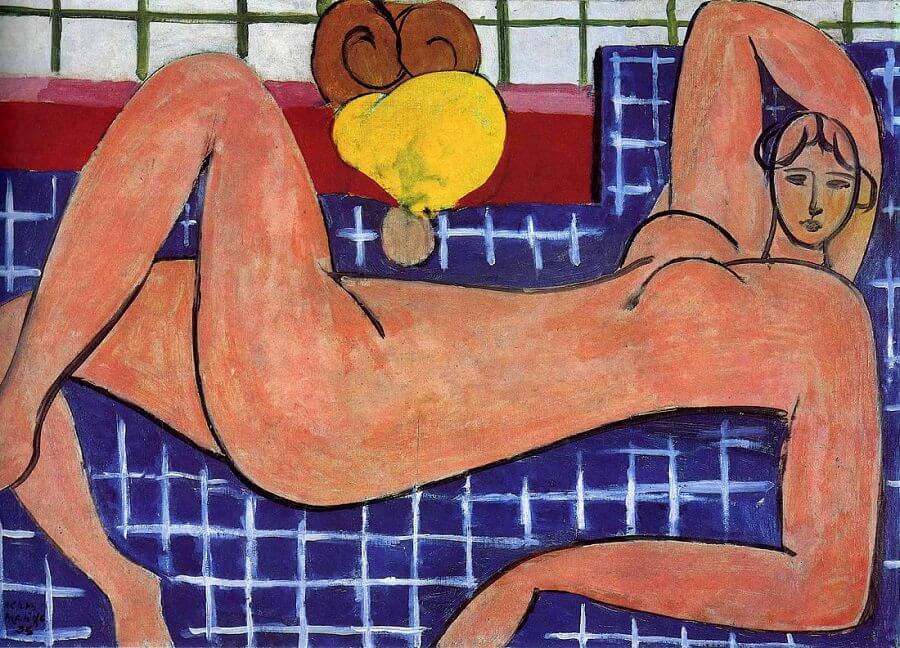
The eroticism which we see revived in The Dance was to be a major factor in Matisse's work of the 1930s. The Platonic love that links painter and model was for Matisse a sine qua non of his work: This relationship is the mutual attachment of things, a shared language - indeed, it is love." Unlike Picasso, Matisse did not see love being necessarily connected with sexual potency. For him, it was inward feeling that made a positive view of the world accessible.
Most of his major works of 1935 and 1936 are nudes. In 1936 Lydia Delektorskaya, who also helped with paper cutouts, was the model for Pink Nude, a painting which for all its modesty of scale achieves a sense of the monumental. The woman's arms and legs are bent but still they are trimmed by the edge of the canvas. As in the Merion 'Dance', the viewer's imagination is urged beyond the spatial limits. The painter has come up to his model as if for a close-up, and the background is a mere setting, with no perspectival depths.
If there is some red spot on one of my paintings it is unlikely to be the heart of the work. The painting was done regardless of it. You could remove the red and still the painting would be there. But in Matisse's work it is inconceivable that you could remove a spot of red, no matter how small, without the entire painting instantly collapsing. ” - Pablo Picasso
In Pink Nude, the background is no more than a pattern, and the nude a sketch of the human body. What gives the woman her considerable clarity of impact is the emphatic exaggeration of the limbs, the frontal angle of the head, and the suggestion of the two breasts. A balance has been struck between organic and geometric form, smooth and modelled surfaces, curved lines and straight, colours warm and cold, and it is a balance arresting in its simplicity. The paint has a dry, matt texture reminiscent of frescoes on plaster. Matisse himself draws attention to the "beautiful matt quality" of mural painting.

